My 2016 Fall sabbatical began September 20th with a residency at the University of Saskatchewan, in Saskatoon, Canada.

The visit to USASK began with my third FARLS (Fine Arts Research Lecture Series) presentation, which chronicled my curatorial work with the David L. Kaplan Musical Instrument Collection.
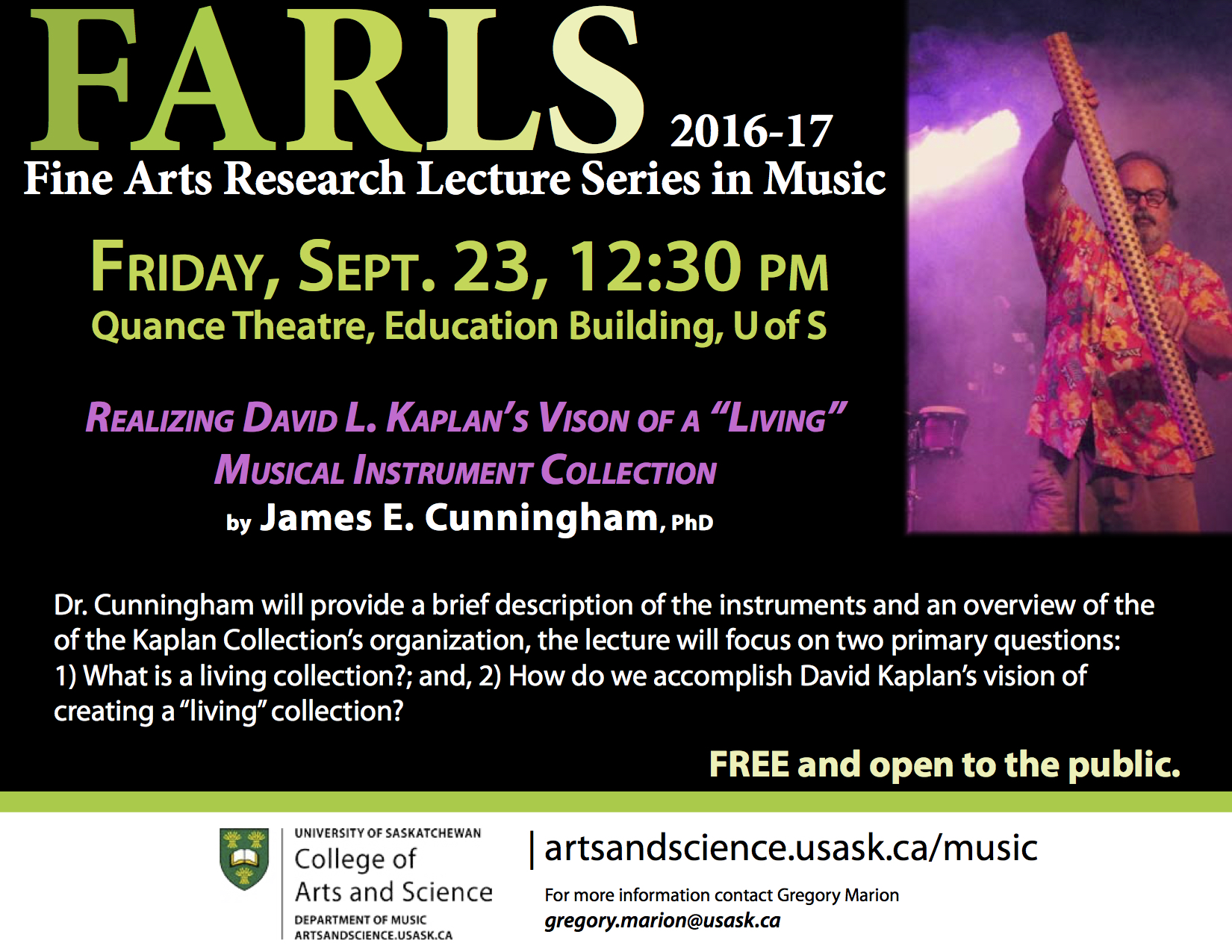
 David Kaplan was fascinated by “sound” of all types.
David Kaplan was fascinated by “sound” of all types.
…and his vision for a “living collection” involved the notion that the instruments therein would not merely be on display in a museum-like setting but would be utilized in educational contexts, played in performance settings, and be the inspiration for composition.
Realizing that vision currently faces a number of challenges…
 …and the will to present solutions for the future of the collection.
…and the will to present solutions for the future of the collection.
The first step towards the creation of a living collection has been the commitment of funds for the making and dedication of a powwow drum the the University by the Kaplan Collection.
The current plans include the filming of the drum-making process, and a formal dedication of the drum to the University during the Aboriginal Week festivities in February, 2017.
The first phase of the sabbatical also involved significant work with the Kaplan Collection itself. Beginning with the assessment and documentation of sixteen additional instruments by local collector William Koloruk, including a hackbrett (a hammered trapezoidal zither manufactured in the former East Germany…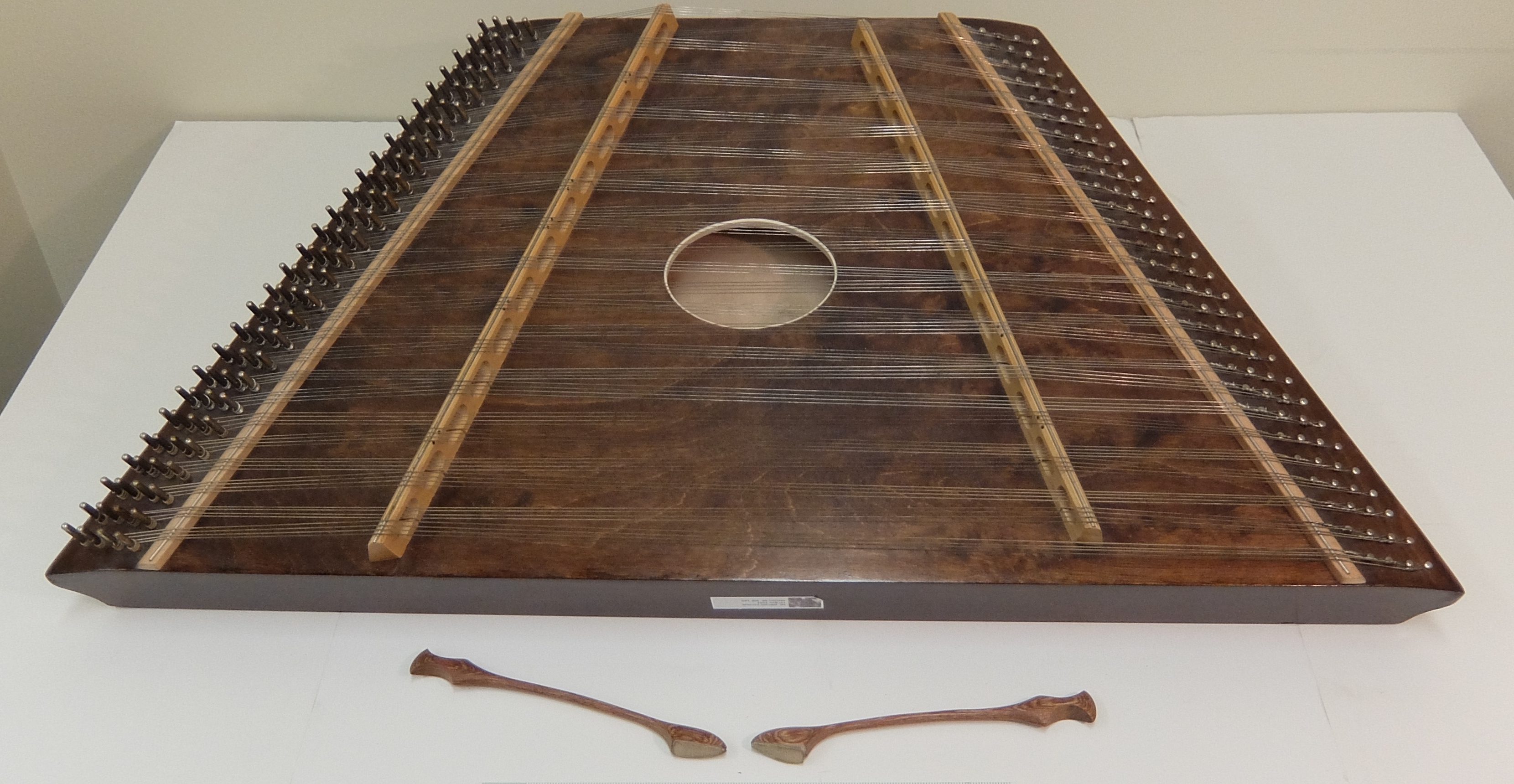
…and several early 20th century banjos, banjo ukuleles, and banjo mandolins…
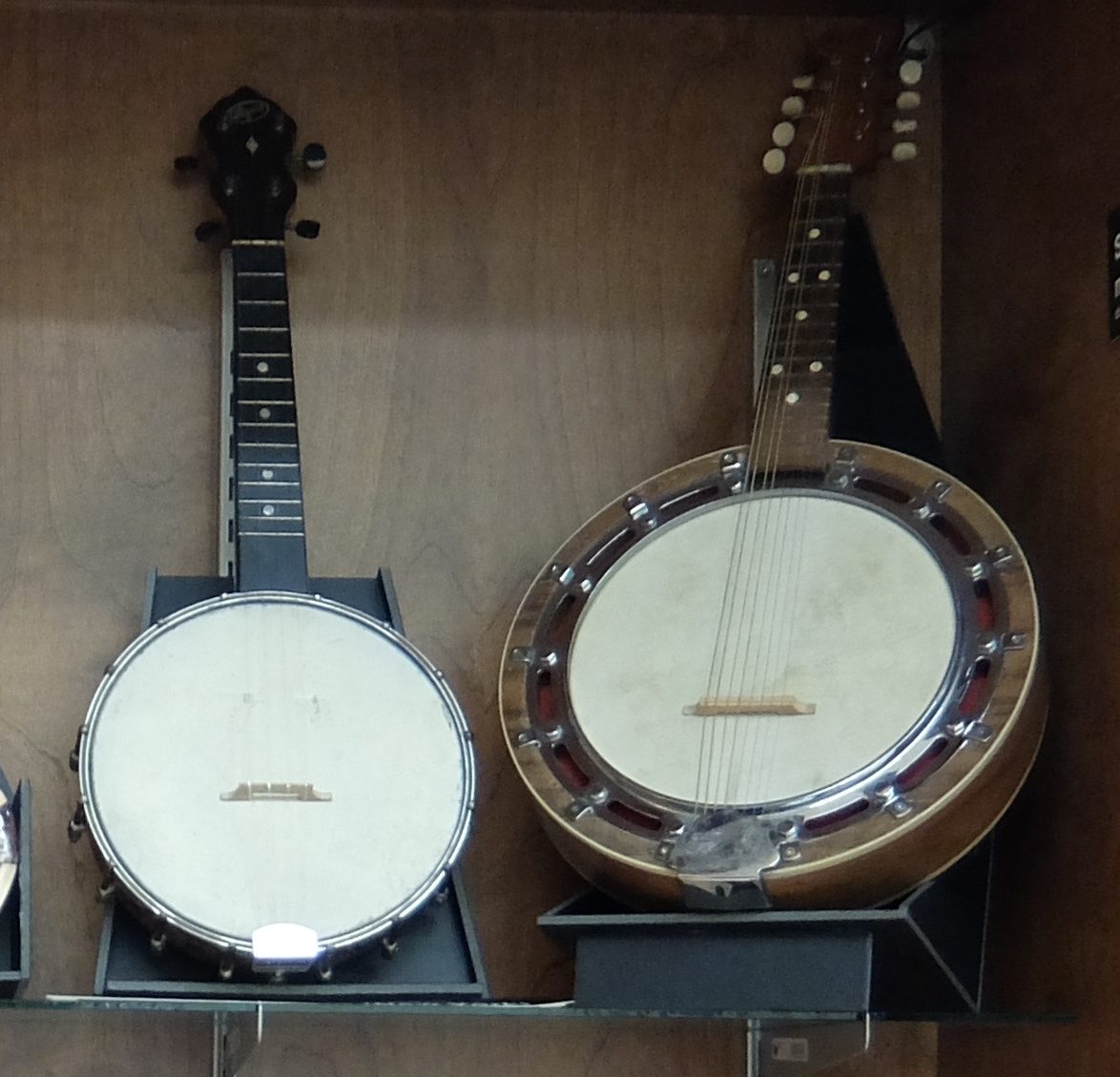
…and a late 19th century Dulcet zither banjo with silver inlay and tuning mechanism.

The Fall 2016 reorganization of the Kaplan Collection also entailed the addition of a previously absent pursed aerophone section. Many of the new aerophones were natural trumpets handmade and donated by James E. Cunningham, including a “plastic double sewerphone” didgeridoo, a Caribbean conch trumpet, an African kudu horn natural trumpet, and a pair of plastic South African vuvuzelas popularized by the 2010 World Cup Football championships.
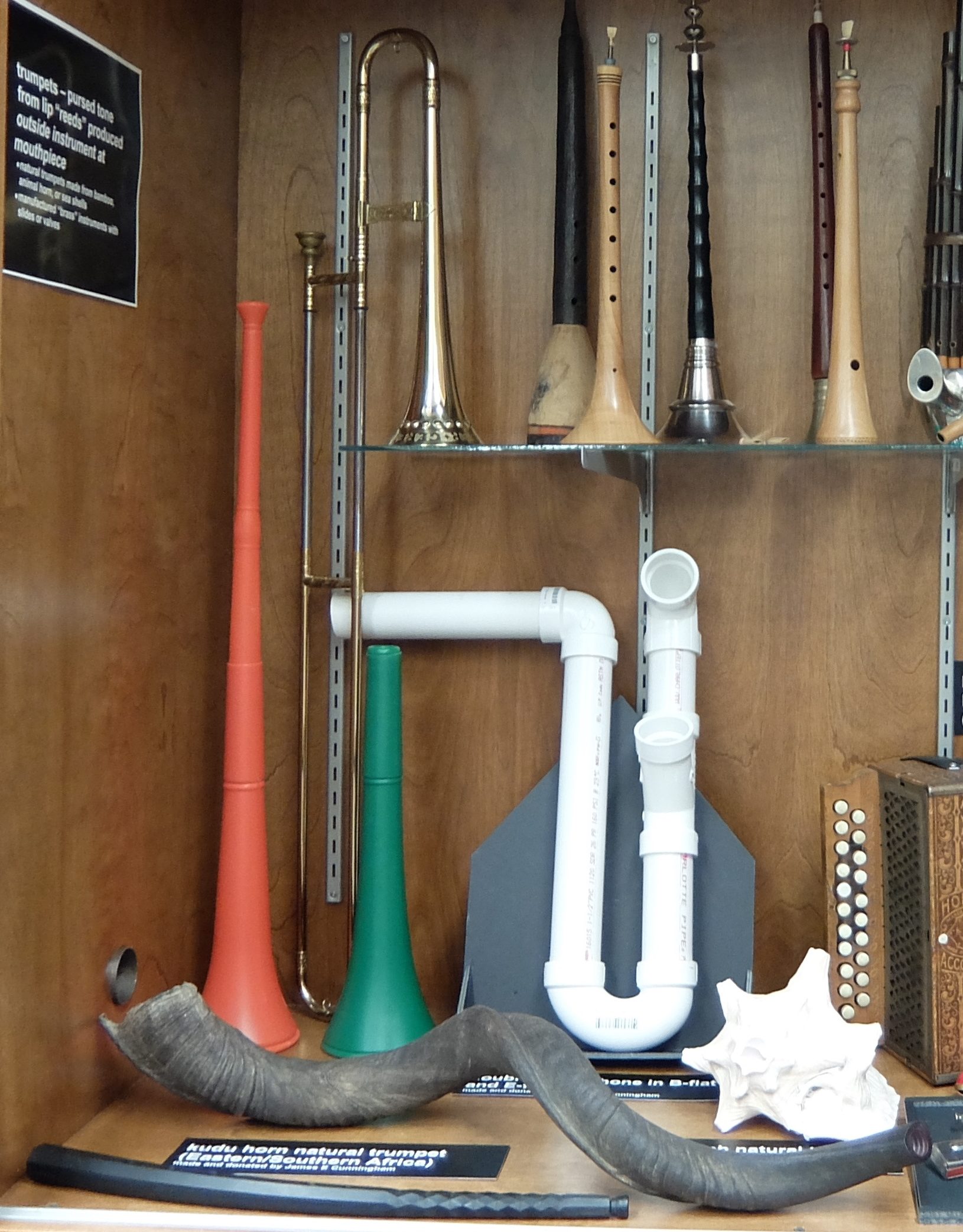
The addition of new instruments also necessitated the reorganization of the Kaplan Collection displays (pictured below).
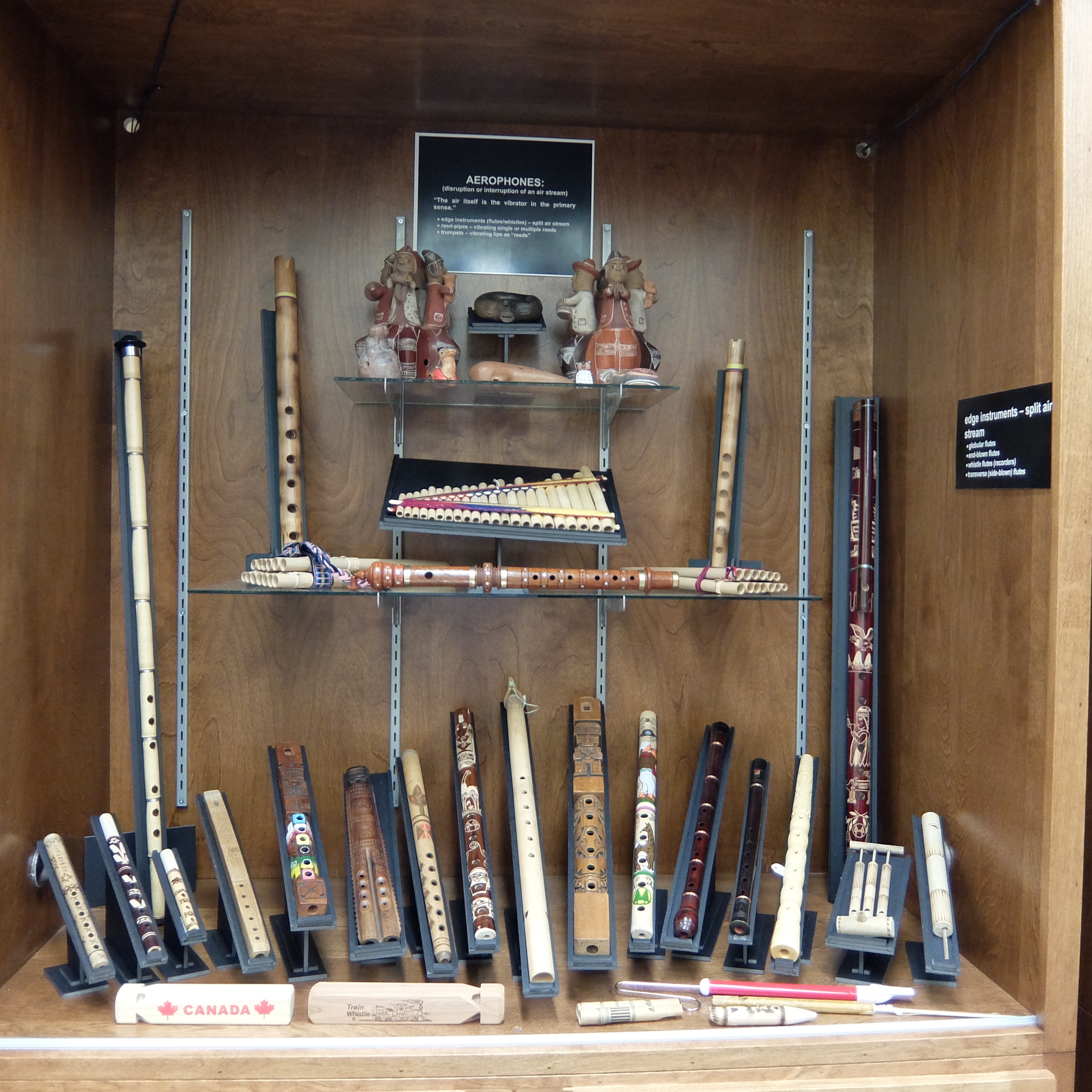

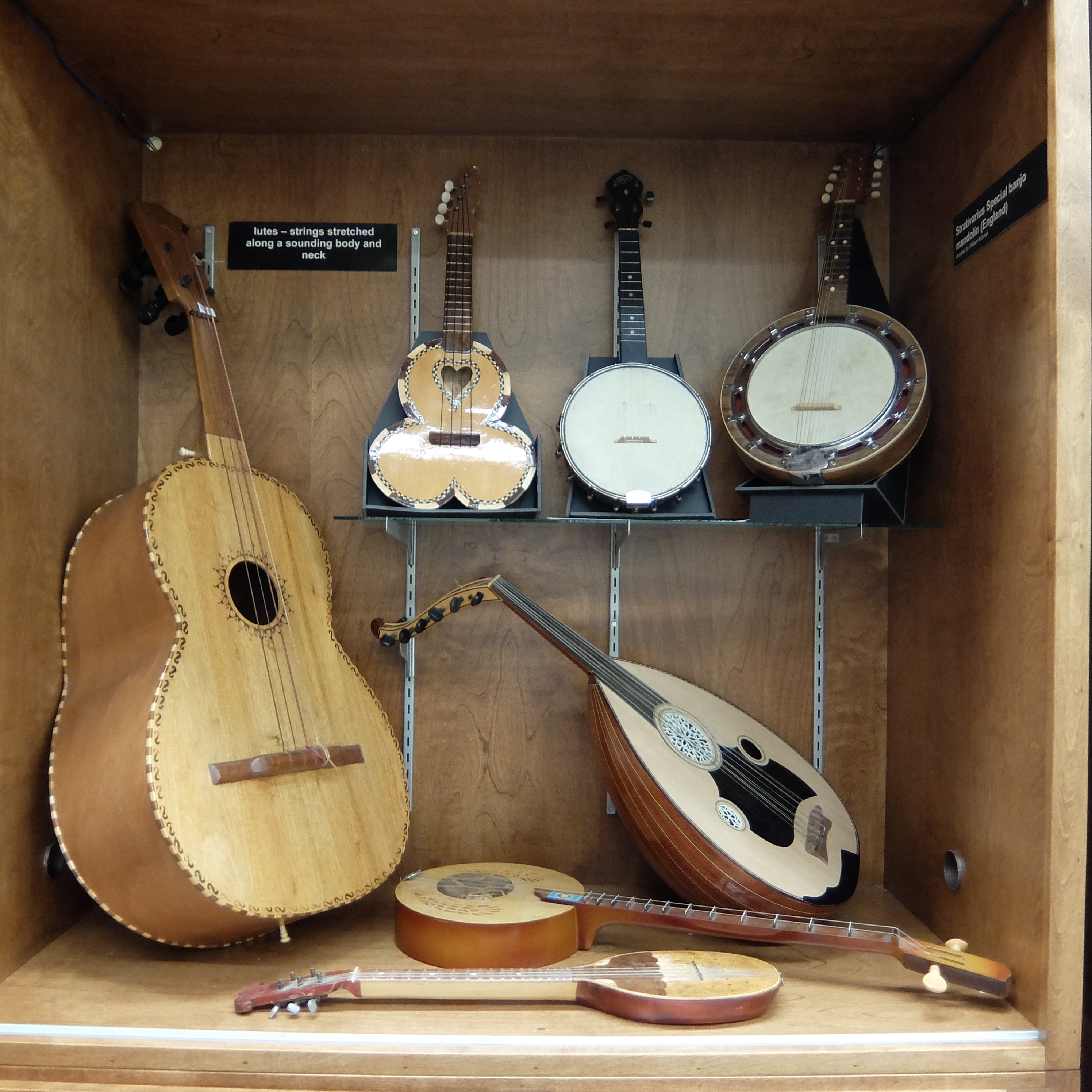
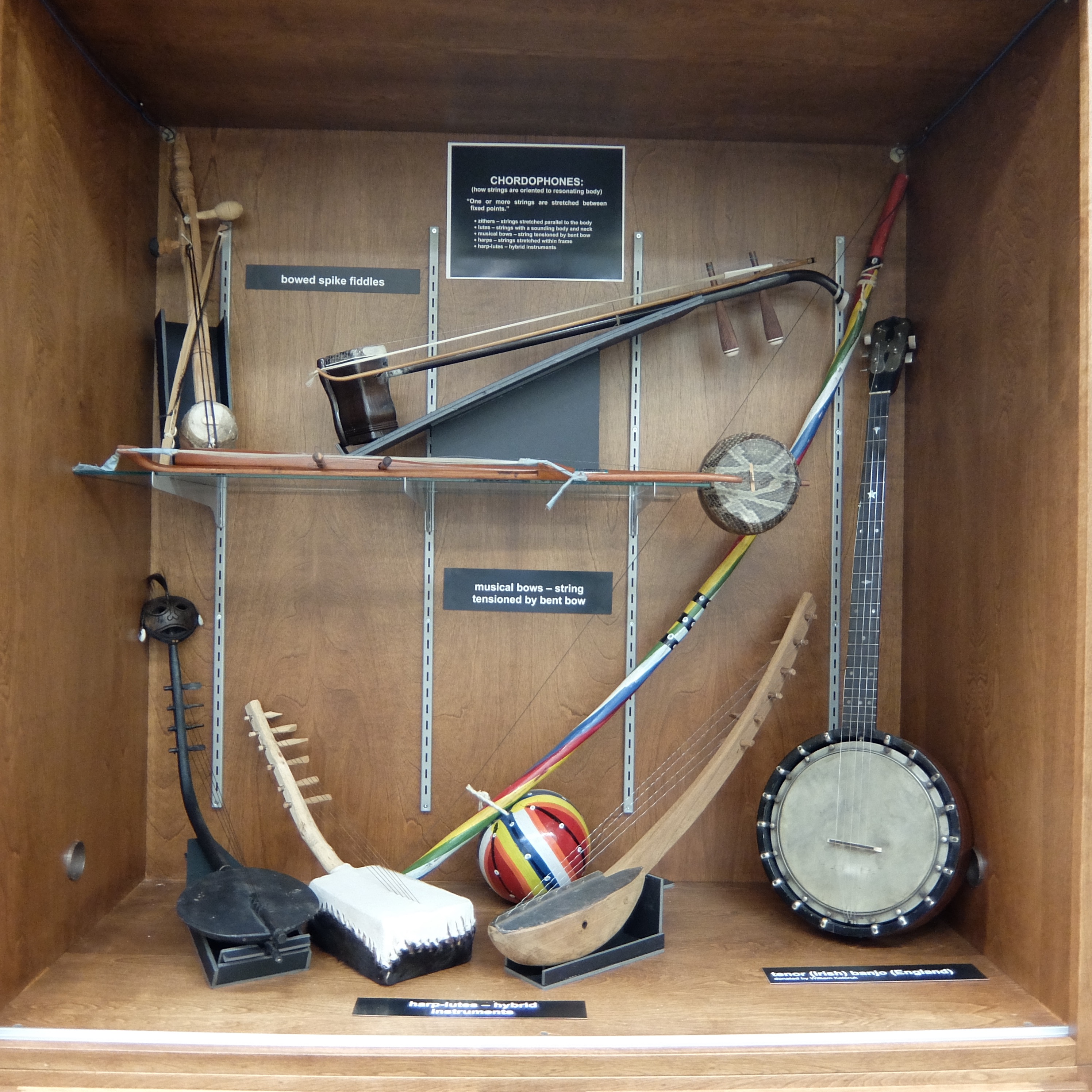
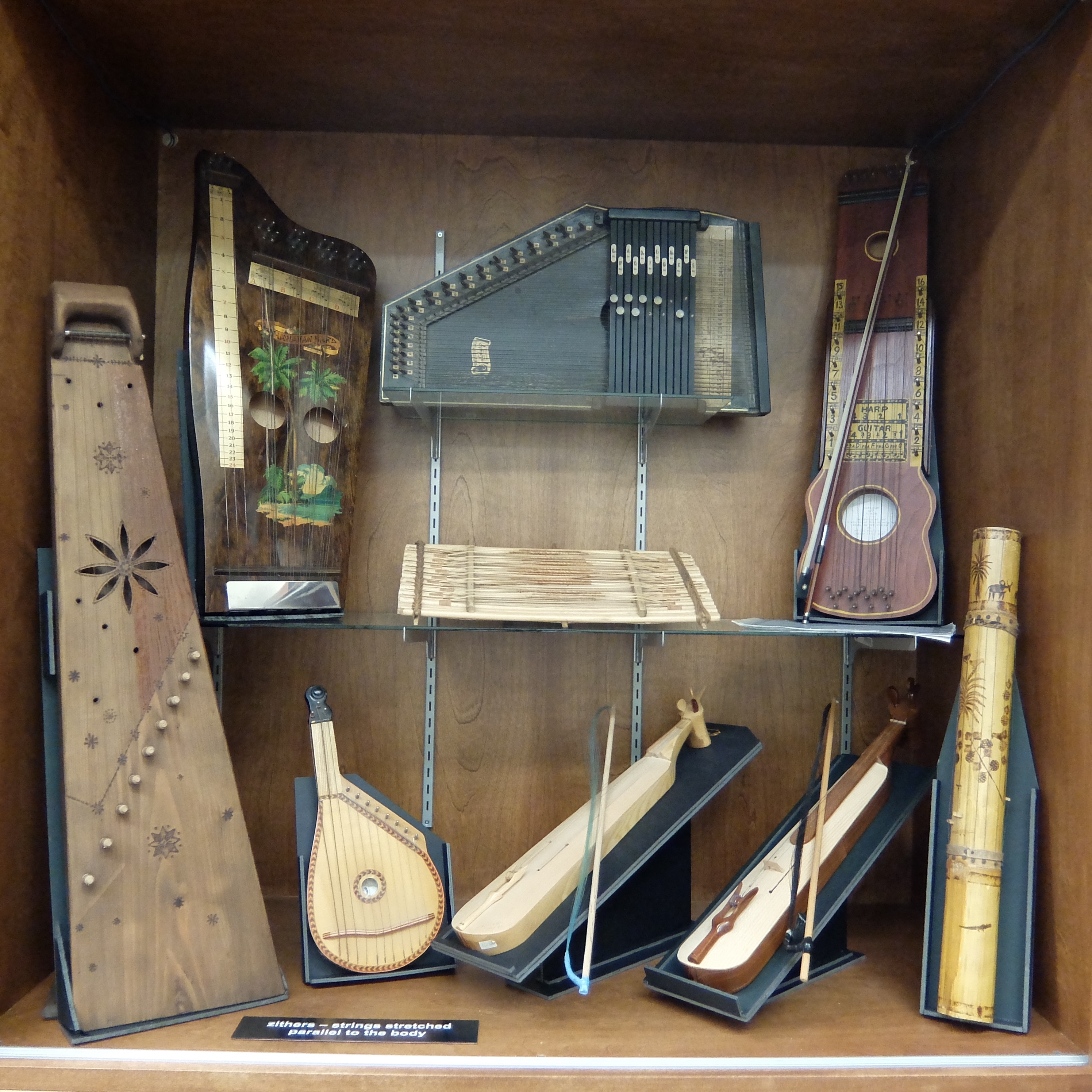

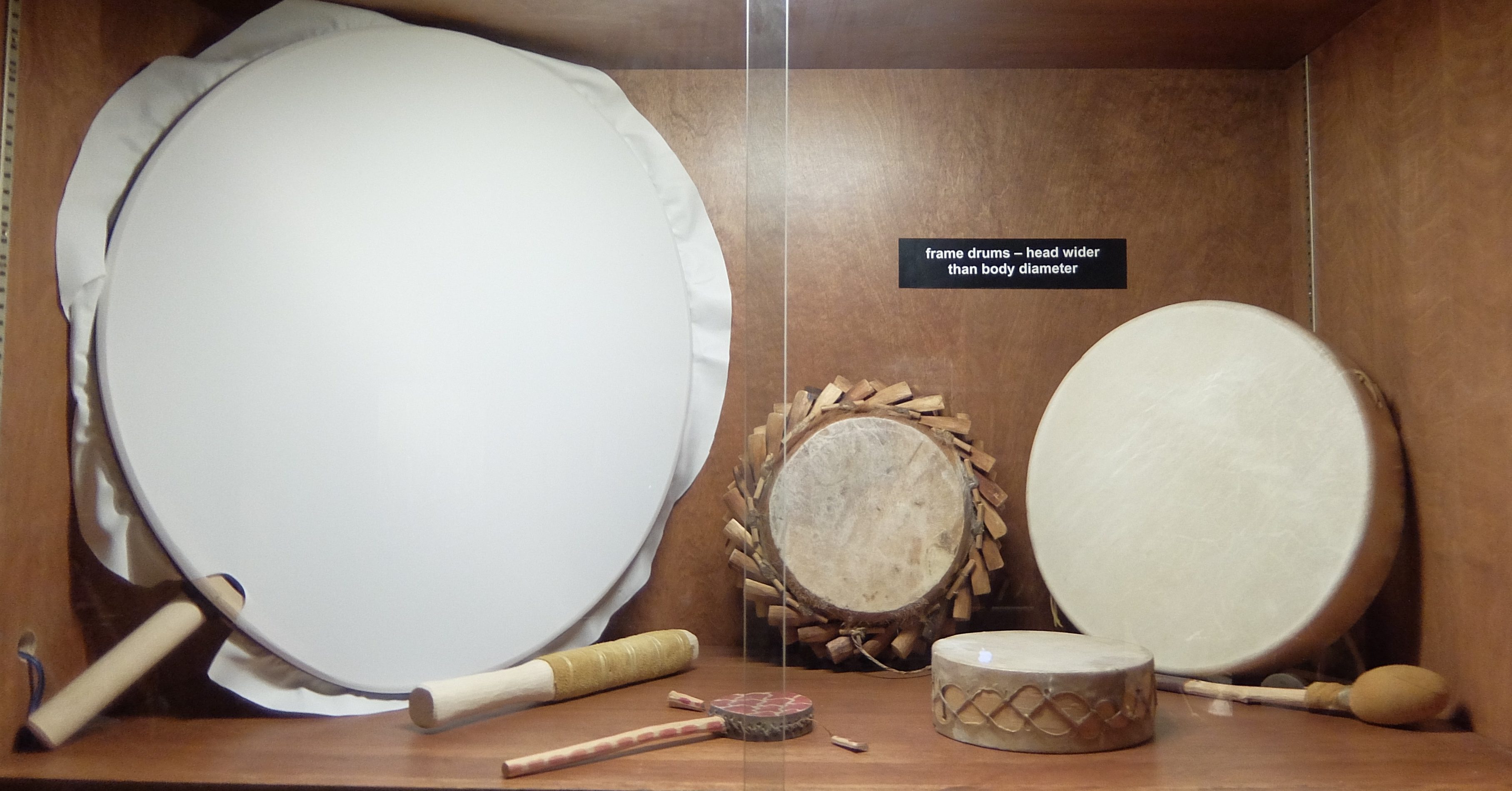
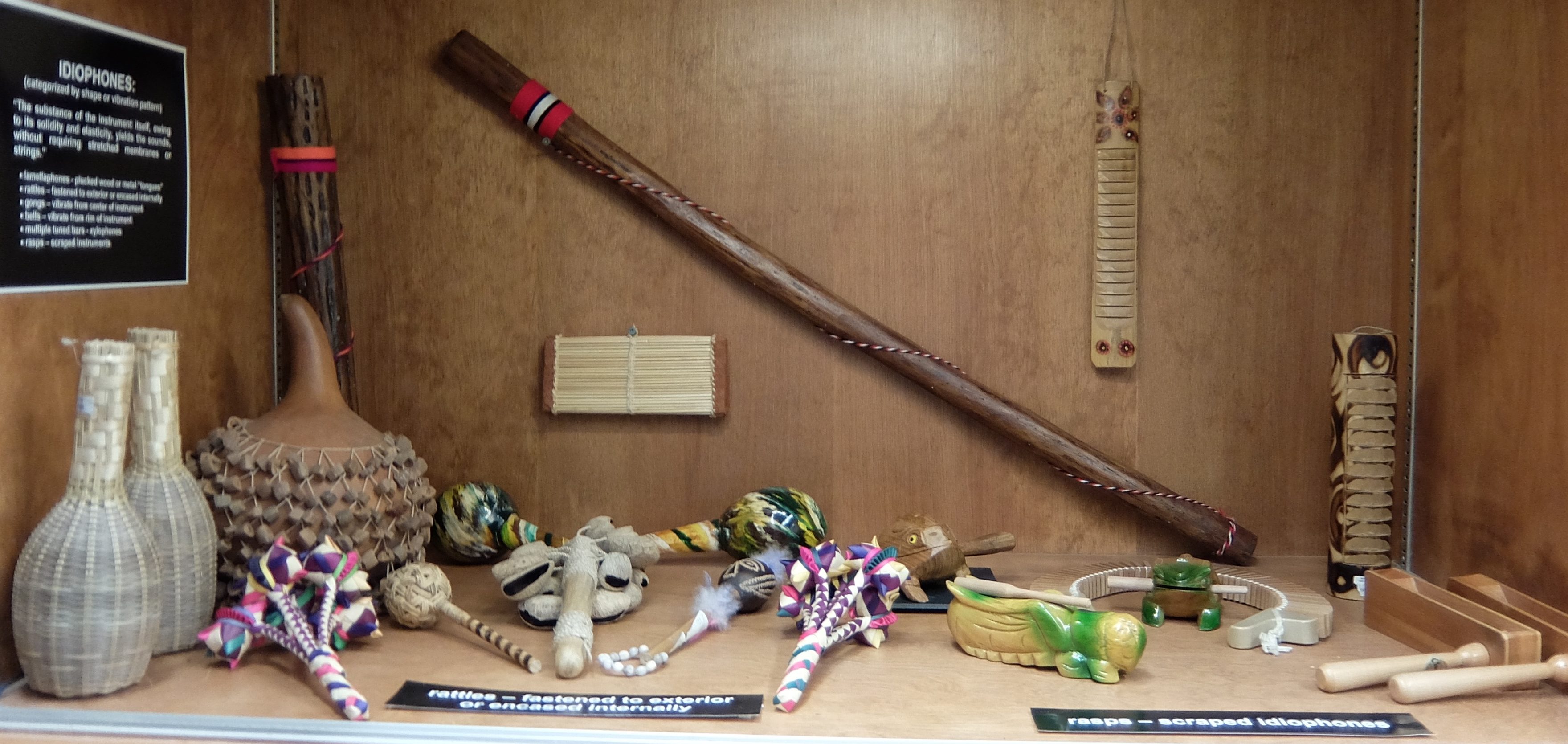

My USASK residency included a technology lecture for EMUS 442, Organization and Administration of School Music Program…
…an IR capture session in Glen Gillis’ three-car garage ambient man cave site in the Saskatoon suburbs, with an application of that IR to a new original composition titled “Man Cave Yoga”…
…and a digital sampling session of select instruments from the Kaplan Collection with engineer Wayne Giesbrecht.
